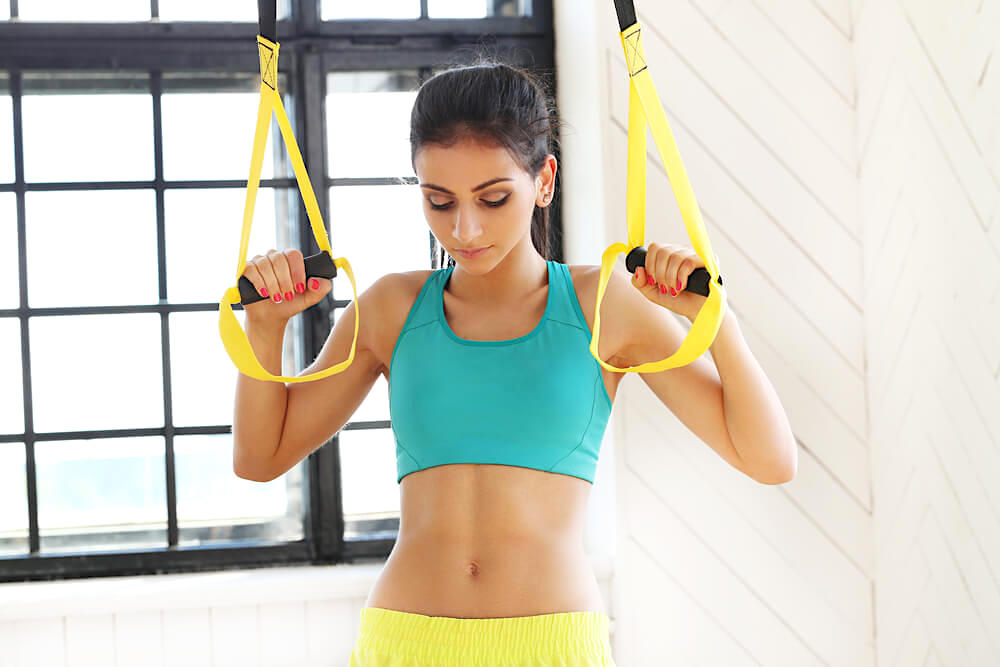What Exactly is TRX?
TRX is a type of suspension training or resistance training that utilizes your own body weight for resistance instead of other types of freestanding weights such as free weights, barbells, or kettlebells. The basic device consists of a long strap with a hand grip on either end. It sounds deceptively easy, doesn’t it? But be aware that it can be as challenging as you want to make it! The system was developed by a former Navy SEAL named Randy Hetrick and who knows better about staying in shape?
What Makes TRX Such A Good Exercise?
There are literally hundreds of exercises that you can do with this one simple piece of equipment, not to mention all the varieties of each exercise. The top three advantages of TRX are:
- The most amazing thing about TRX as a form of exercise is that it can be done virtually anywhere. If you do not like the idea of being restricted to certain machines at the gym or classes that may not be conveniently timed or located, consider introducing TRX into your workout regimen. Not to mention the fact that the entire device only weighs about two pounds so you can even travel with it. It is also a perfect at-home exercise if you live in a small apartment, and do not have a lot of space for workout equipment.
- Believe it or not, using the TRX can be a full body workout and can utilize all the major muscle groups. Depending on the specific exercises, you can work just about any part of your body. It even works other aspects of exercise including flexibility, core stability, overall strength, endurance, stamina, and balance. It is everything you could find in a gym, in one portable device.
- TRX is completely customizable to your fitness level, your workout goals, and your desired intensity. The exercises tend to be smooth movements so there is less impact on your joints; you can execute the different motions to accommodate your own body since your body is the resistance for the motions; and you can mix it up so that you get a new workout every day.
So what do I do to get started?
With hundreds of motions and exercises and regimens to choose from, it can be daunting to get started. It is hard to know where to begin. You can certainly start with a premade workout video just to get an idea of how this type of exercise works, or you can just select some of the exercises available and then build your own routine and plan from there.
If you need guidance on any particular motion, make sure to check out the hundreds of YouTube videos available that can walk you through the movements including tips to maximize the exercise itself and ways to reduce the chance of injury.
For a quick introduction to this type of workout regimen, here are 21 most popular TRX exercises to get you started. Most of them are on the ‘beginner’ level but there are a few on here that would be qualified as ‘intermediate’. The advanced ones are for another time!
Upper Body – For your personal tickets to the gun show!
- TRX Overhead Squat – This particular move engages the upper body when you keep the TRX strap pulled taut in addition to working your posture muscles while you squat.
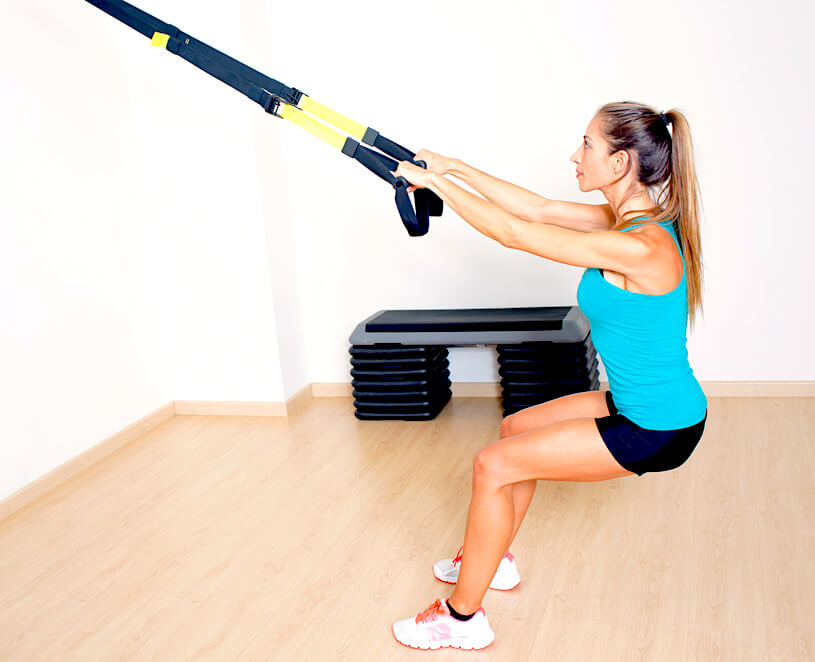
- TRX Push-Up – Using the straps to hook your toes slightly above the ground, this pumped up push-up targets mostly the body like a regular push-up. Make sure to keep your core engaged to get the most out of this one.
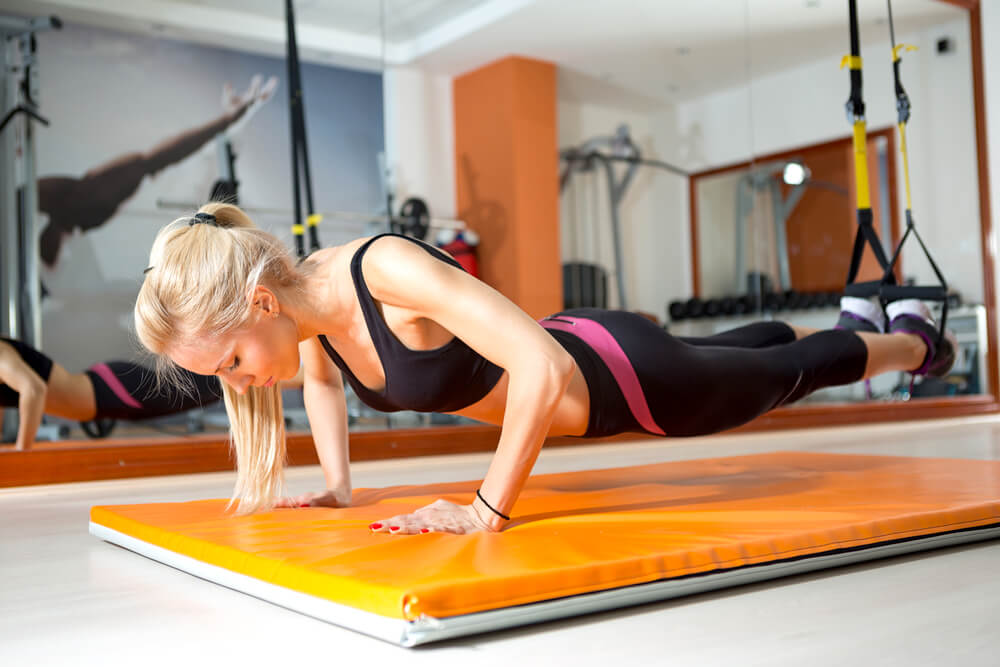
- TRX Chest Press – This one does look like a standard chest press that you might have completed with a weight machine, but it uses the weight of your body as resistance against the straps to do the work. Instead of pulling weights to you, you are lifting your body weight away from your hands.
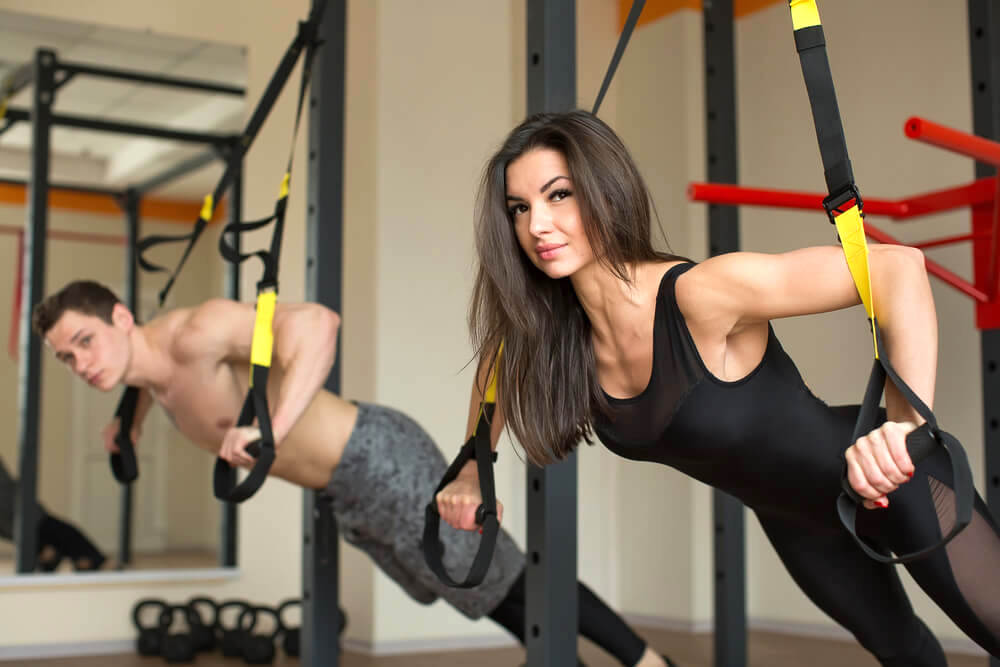
- TRX Low Row – By leaning back against the resistance straps and pulling your body up to meet your hands, you can work on that upper back as well as your arms and shoulders. Make sure to keep your torso straight and your core tightened to work as many muscle groups as possible.
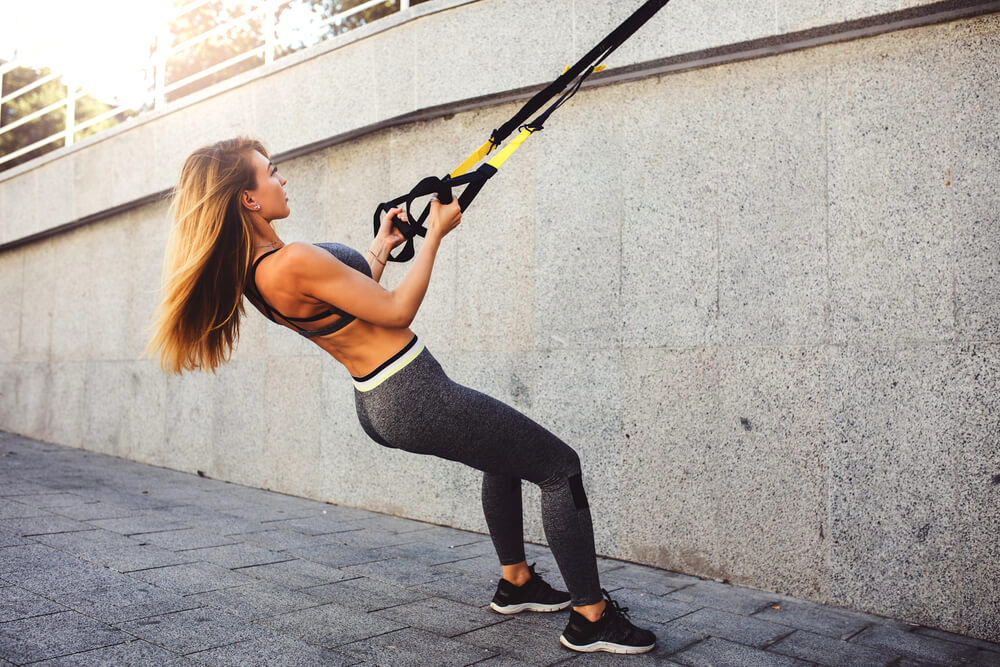
- TRX Single-Arm Row – For an extra burn, try the above exercise using only one arm at a time. Make sure to use your other arm as a counterbalance to keep your weight steady.
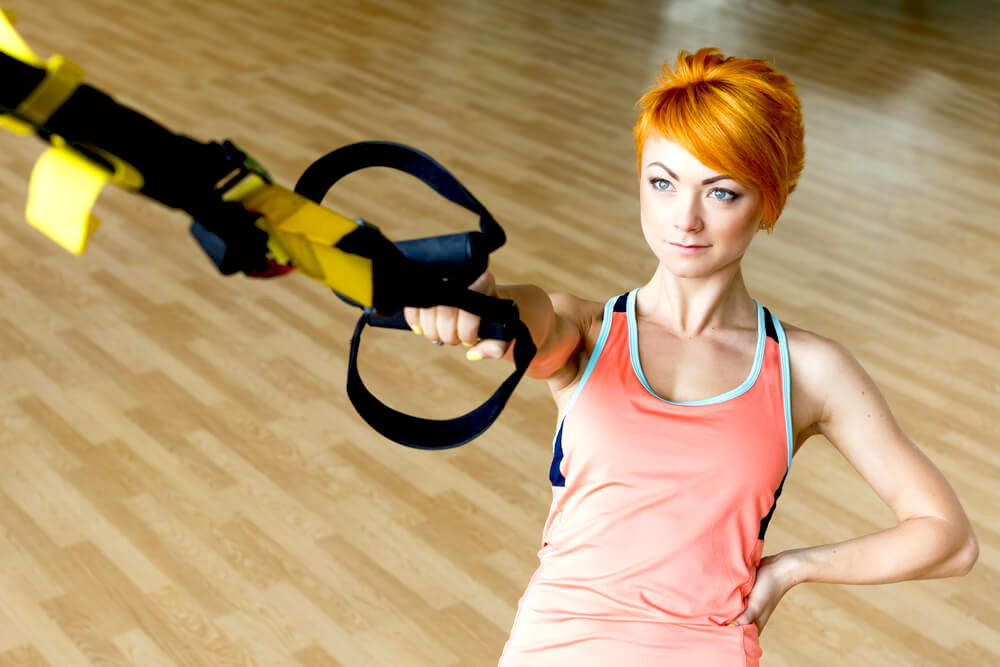
- TRX Alligator – This one starts to work the shoulders in addition to the arms. Facing the anchor point and leaning back against the straps, you pull your body up with one arm moving up and one arm moving down. When you repeat with the next rep, simply switch which arm goes up and which goes down.
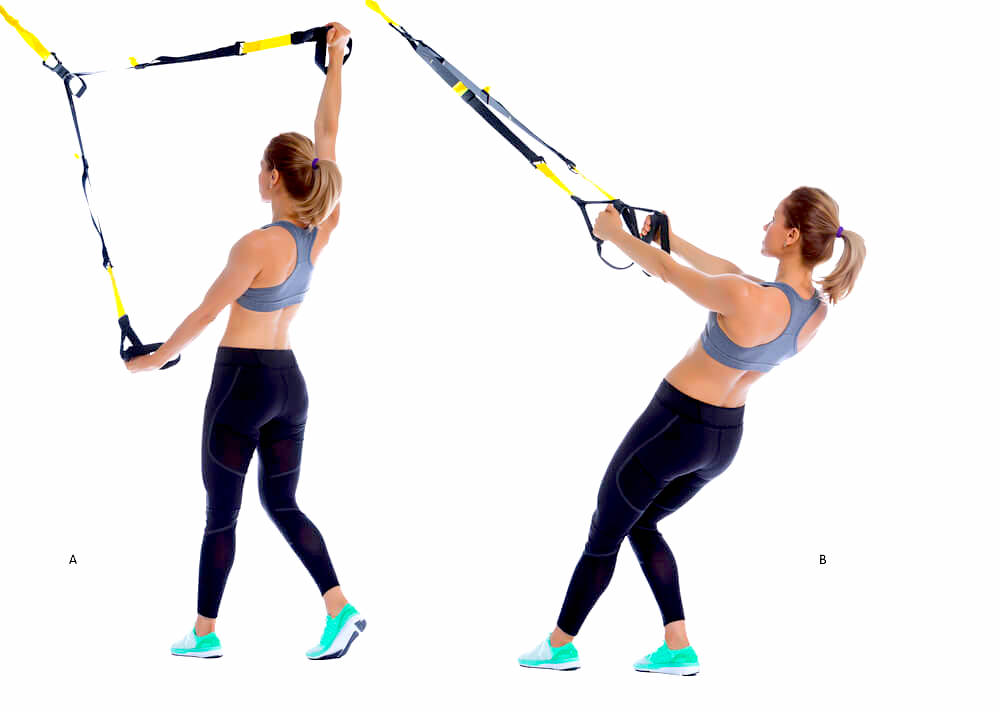
- TRX Bicep Curl – This one also looks like the weight-machine counterpart except instead of your muscles engaging to bring the weights to you, you are moving your body weight against the resistance.
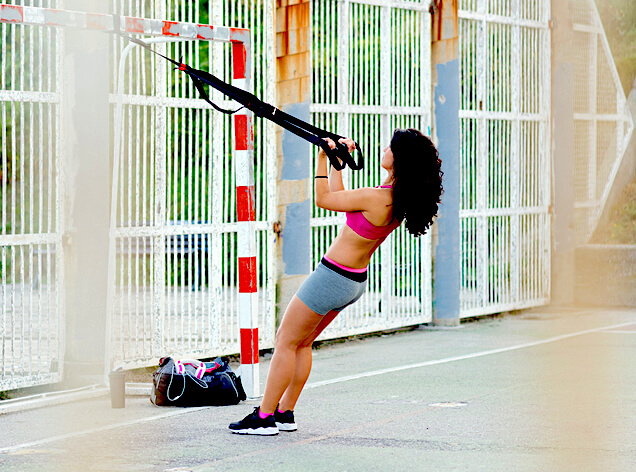
Lower Body – No one wants to be top-heavy!
- TRX Hip Drop – This one is terrific for helping to relieve lower back issues and stiffness, and helps increase hip flexibility as you create the arc with your entire body with your hands and feet roughly in line while you create the C with your torso.
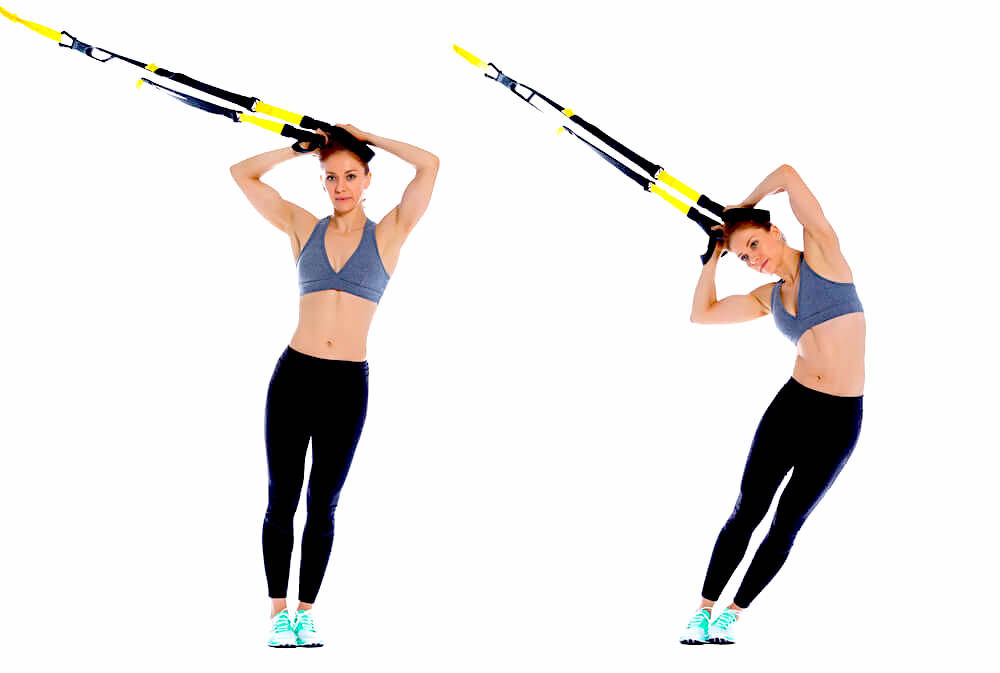
- TRX Squat – Keep your back straight as you use the resistance of the bands to strengthen your legs. It is an excellent one to get started with as you learn how to use your body as its own resistance weight.
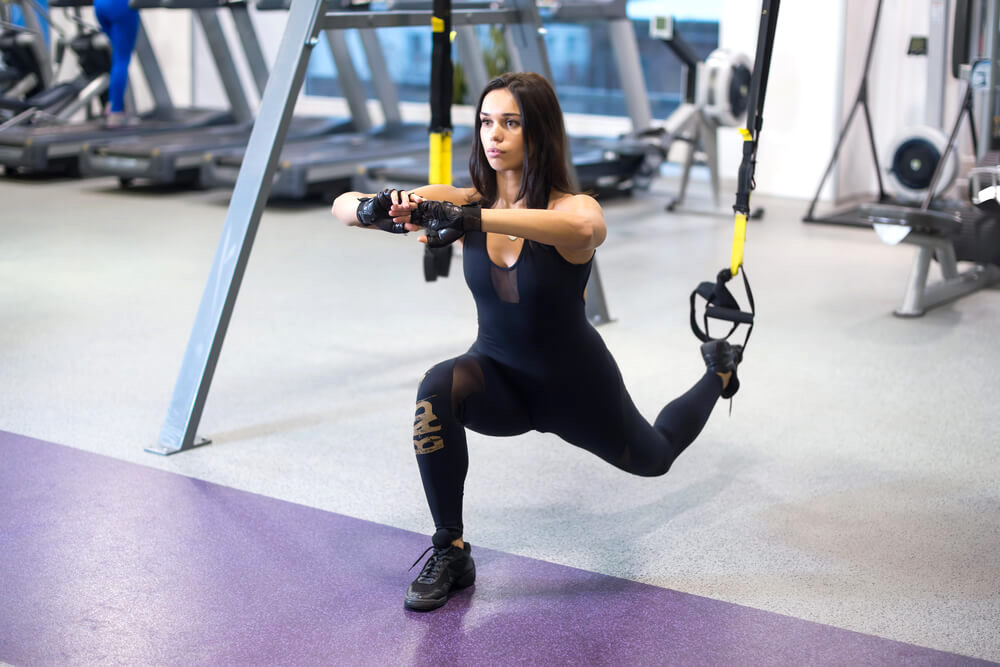
- TRX Single–Leg Squat – When the squats get too easy, take it up another notch and try doing them with just one leg. Make sure to alternate with both legs.
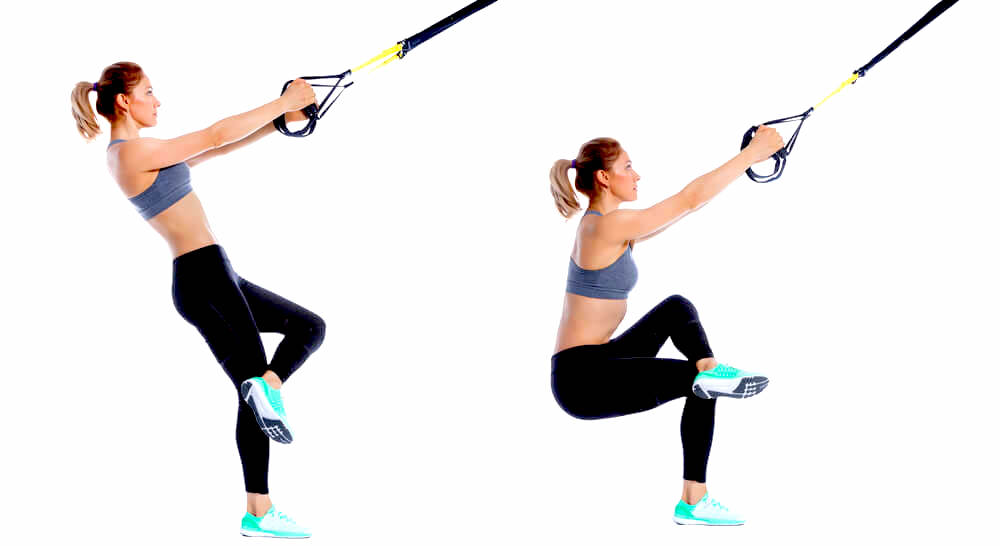
- TRX Wall–Sits – If wall-sits are not difficult enough on their own, you can try them with resistance! If you cannot hold the position for the full thirty seconds at first, that is perfectly fine. You can start with your own fitness limits and work up to a longer hold for a more intense burn.
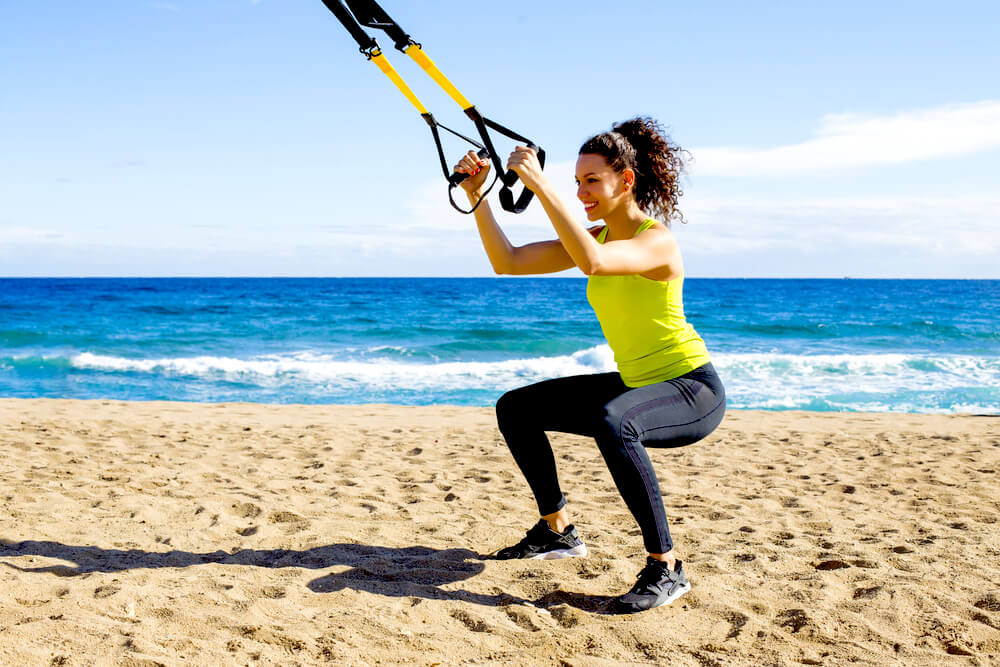
- TRX Torso Rotation – This one also helps relieve lower back pain and stiffness as it works the obliques. Not to mention the stretch can feel awesome as you carefully rotate and twist! This is particularly good as a warm-up and a cool down as it helps stretch the entire torso.
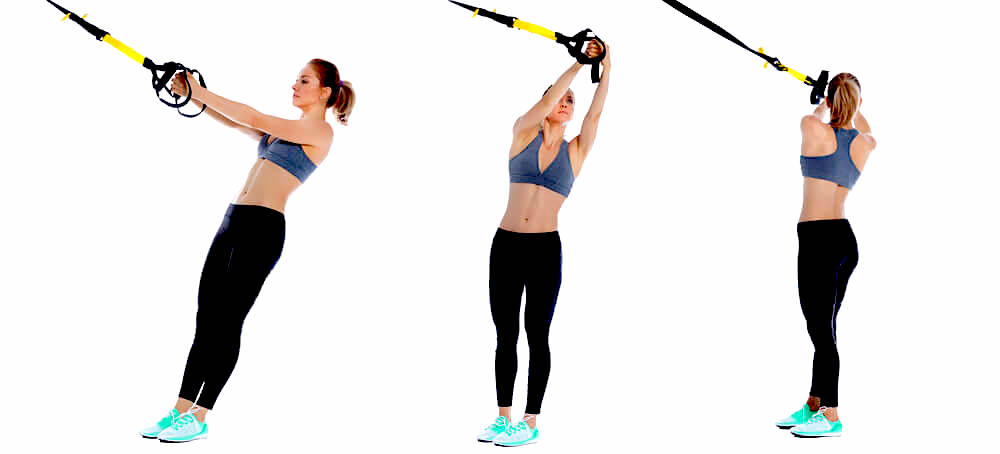
- TRX Pistol Sit – If you get to the point where the 30-second wall sit is ‘too easy’, try the pistol sit which looks very similar except one leg is extended out in front of you. Just remember to alternate!
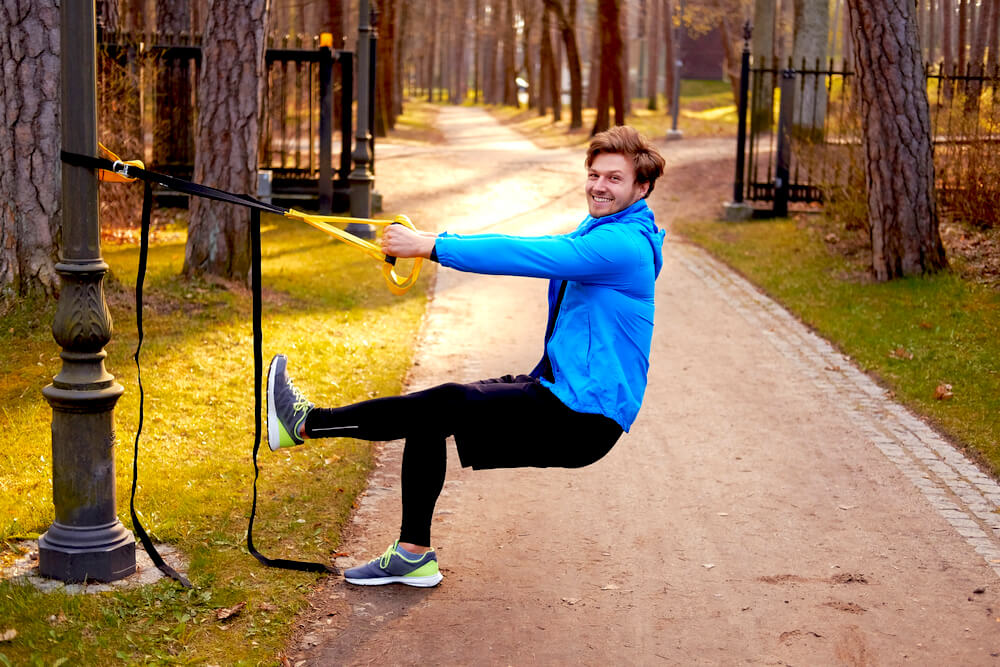
- TRX Crossing Balance Lunge – And who doesn’t want a better rear end? With one leg crossed behind the other, lower yourself into the squat or lunge position and slowly raise yourself back up.
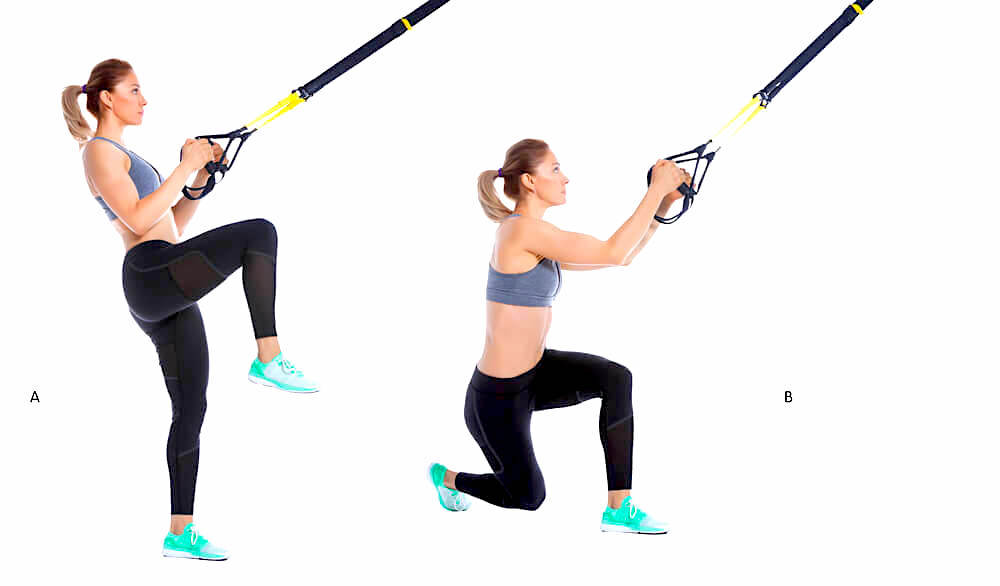
Core-Specific – It is what holds you all together!
- TRX Pikes – The key to maximizing your results from any TRX exercise is to keep your core engaged. But to strengthen the core itself might be your first step! For this one, start in a suspended plank position and lift your hips until you are in an upside-down V position.
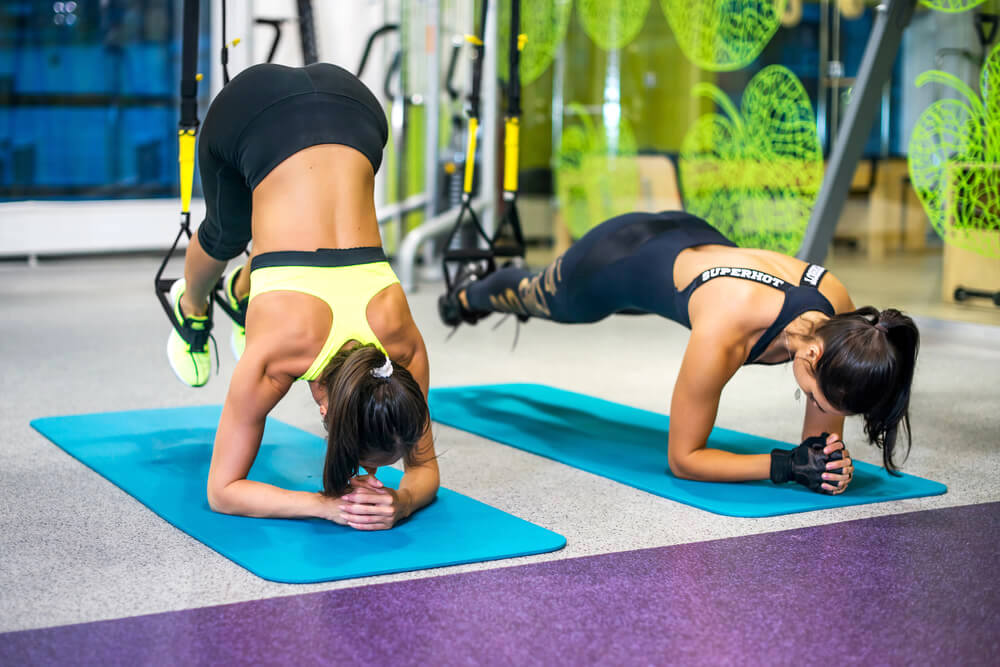
- TRX Oblique Crunches – If you have already succeeded in learning the regular TRX Crunches, the Oblique Crunches are the next step. Instead of pulling both legs to your chest using the resistance, draw them sideways and towards your alternating elbow. You will feel the burn and the stretch in your sides as well as your abdomen.
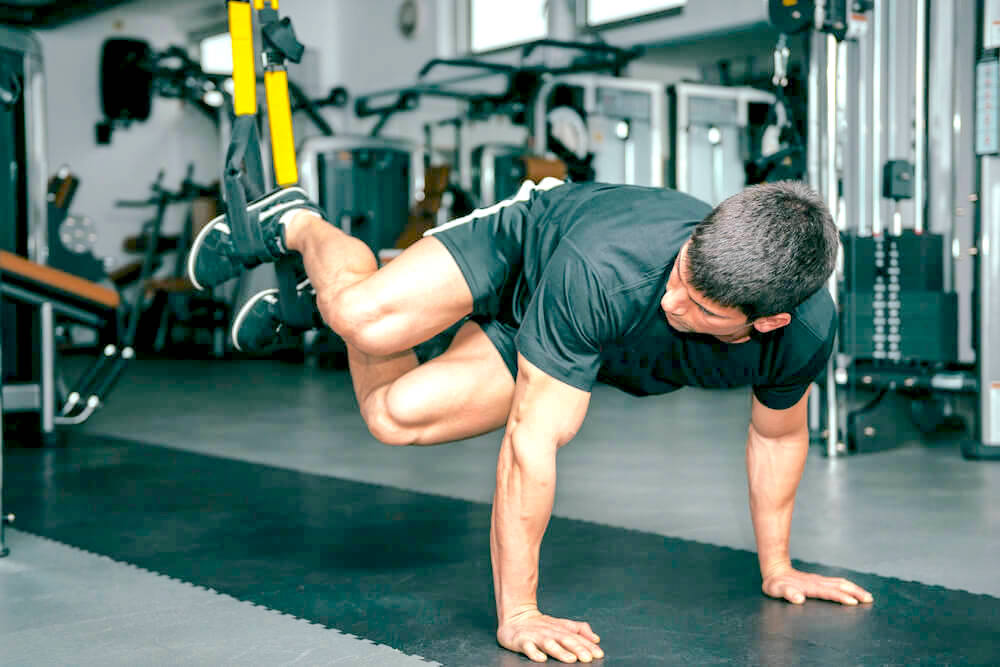
- TRX Body Saw – As this movement illustrates, sometimes in TRX is the smaller movements that get the big results. From a plank position with your forearms on the floor, rock forward until your shoulders are just in front of your elbows and then slide backwards until your shoulders are just behind your elbows. Try to maintain your taut plank position so that you are properly using all of your core muscles.
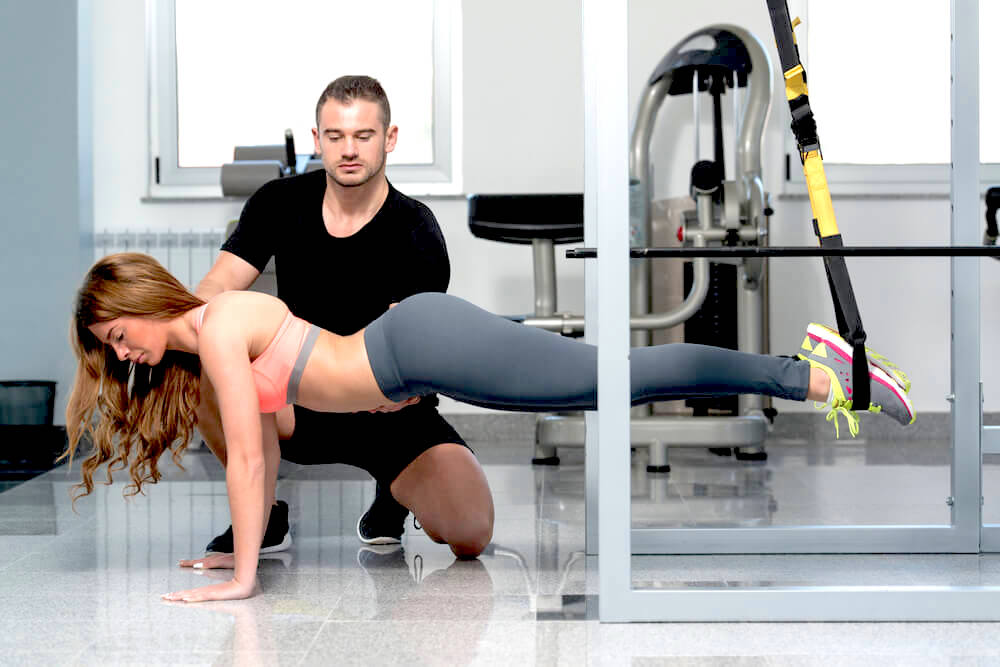
- TRX Side Planks – These are not quite as difficult as they sound. With both feet in the straps, lie on one side of your body and then lift your body straight up with your elbow and shoulder aligned. Do not forget to swap to the other side!
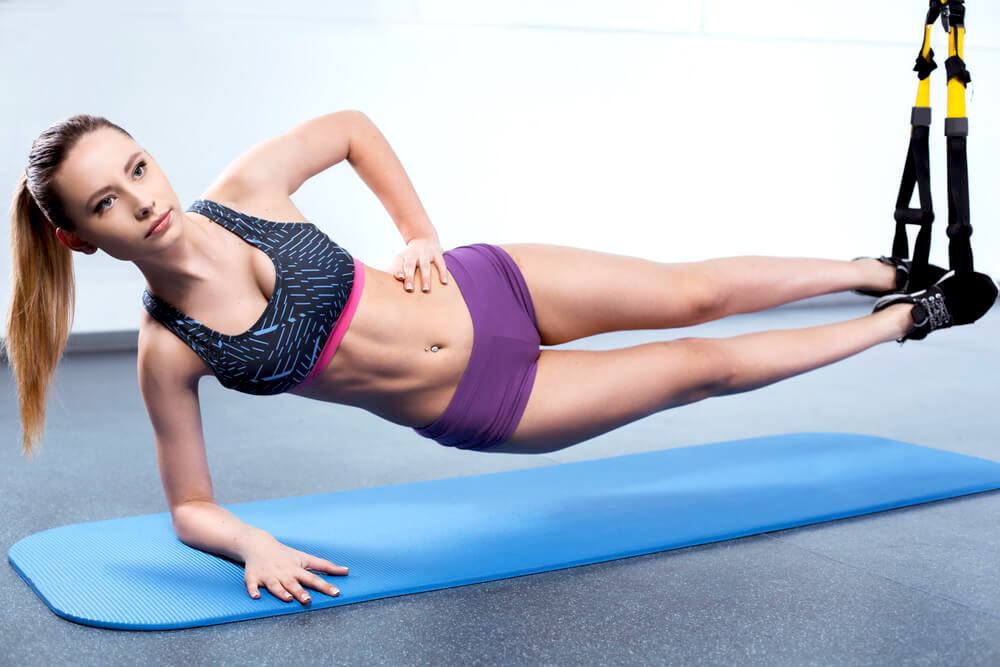
- TRX Knee Tucks – With the focus on both the core strengthening and the hip flexibility, this one illustrates the multi-purpose targets of each exercise. From the push-up position, bring your knees towards your chest, hold, and kick them back out.
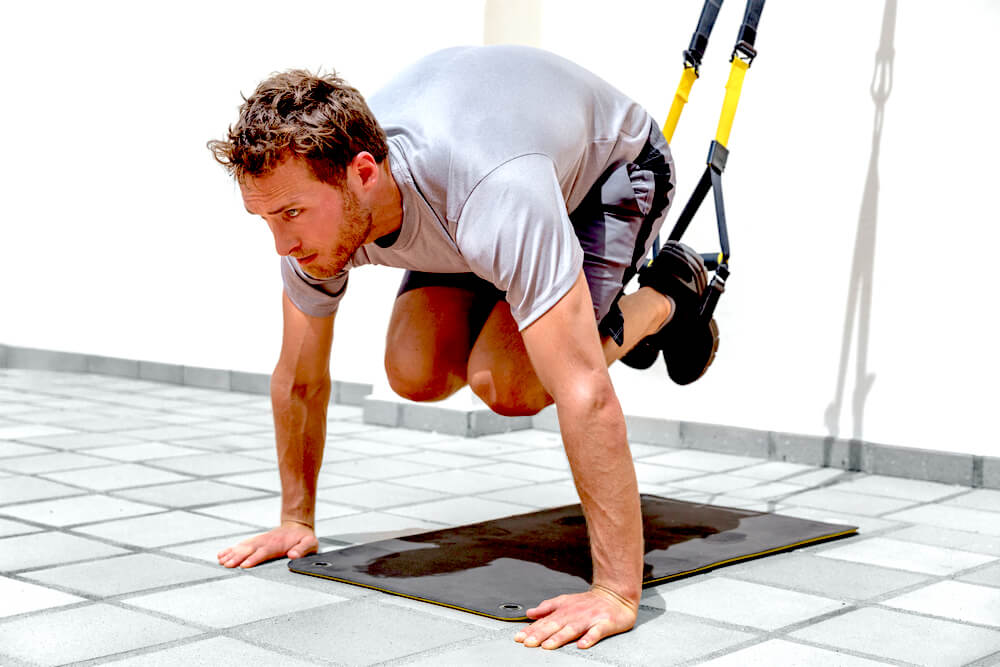
- TRX Hip Raises – Tuck your feet in the TRX band and begin on your mat. Lie with your back flat against the mat, and slowly raise your hips, until your knees are in an upside-down V position. Lower your hips and repeat.
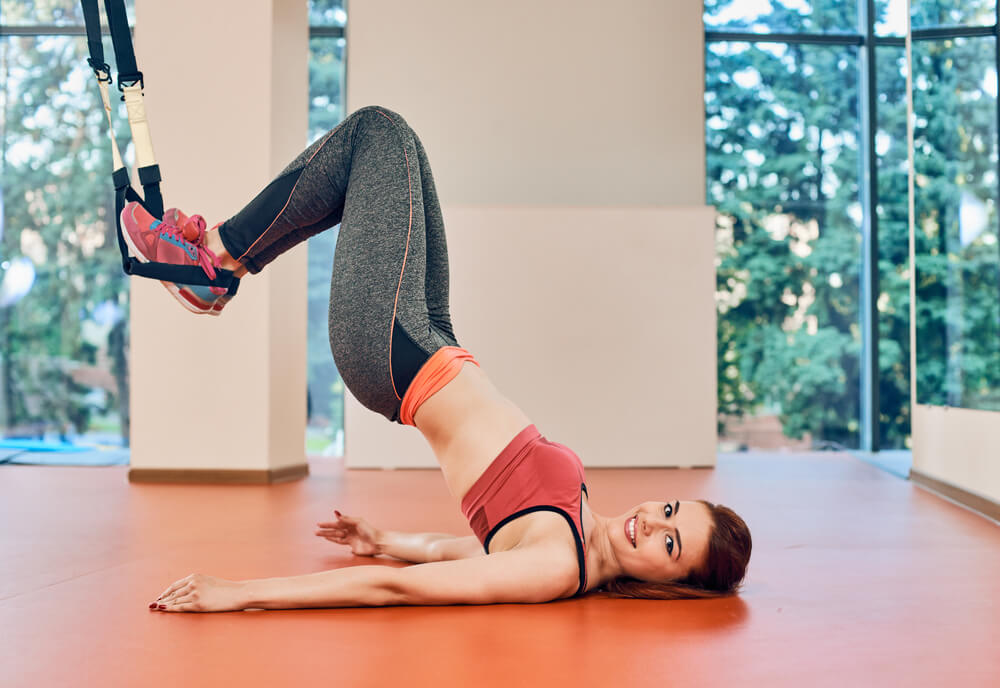
- TRX Mountain Climbers – Not unlike your average mountain climbers, this exercise just adds a bit of resistance for intensity. Anchor your feet with the TRX, and bring one knee towards your chest. Repeat with the other knee.
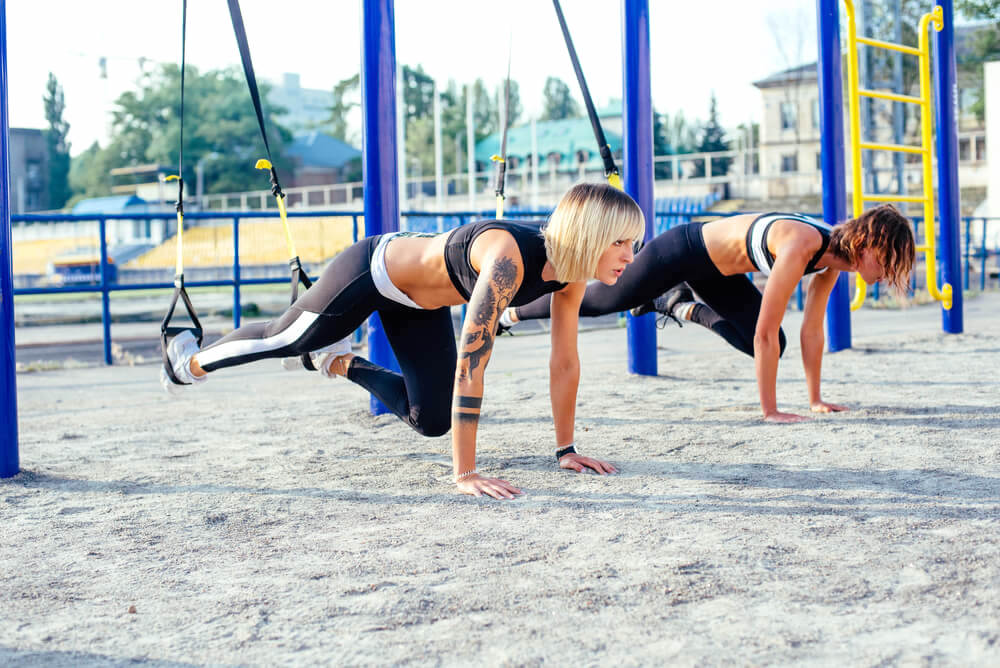
Are you interested in a few extra tips as you start your new TRX workout routine?
- To get the most of out of each exercise, do your best to keep your core muscles tightened throughout each motion. Not only does that strengthen your core itself, but it also helps keep the proper alignment through the motions.
- Likewise, do not rush through each motion, or execute them with jerky fast movements. Using slow, controlled movements in every direction throughout the exercise helps develop the muscles you are targeting and also reduces the possibility of injury. Think of it more like yoga or Pilates and less like hoisting a barbell over your head.
- There are also specially designed exercise combinations to provide training for specific goals such as rowing, tennis, or even running. By customizing your exercise combinations, you can meet just about any fitness goal. But please do not think that TRX is just for hardcore athletes; it can be for everyone.
- Before starting any new exercise regimen, make sure to check with your physician to see that it is suitable for your physical demands and needs. And always start slow. Your body will tell you when it has had enough and when it is ready for more.
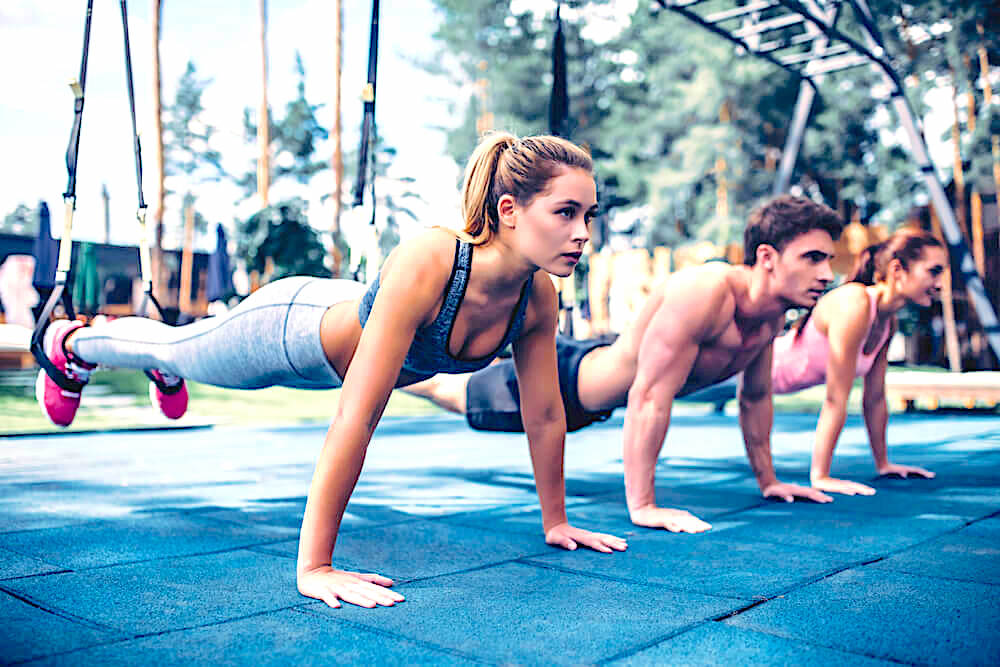
Truly one of the best features of TRX is the flexibility of the entire system. Your regimen can be customized for your personal needs and limitations, and can be modified as you go. And just like at a traditional gym, you can focus on different body parts on different days to let your body rest and recover.
Not to mention that the system itself is relatively small, lightweight, and portable so if you travel, it can always go with you. Or if you prefer to mix up your locations for variety, take it with you. As long as you have a sturdy anchor point and a stable surface beneath you, you can do your TRX workout!
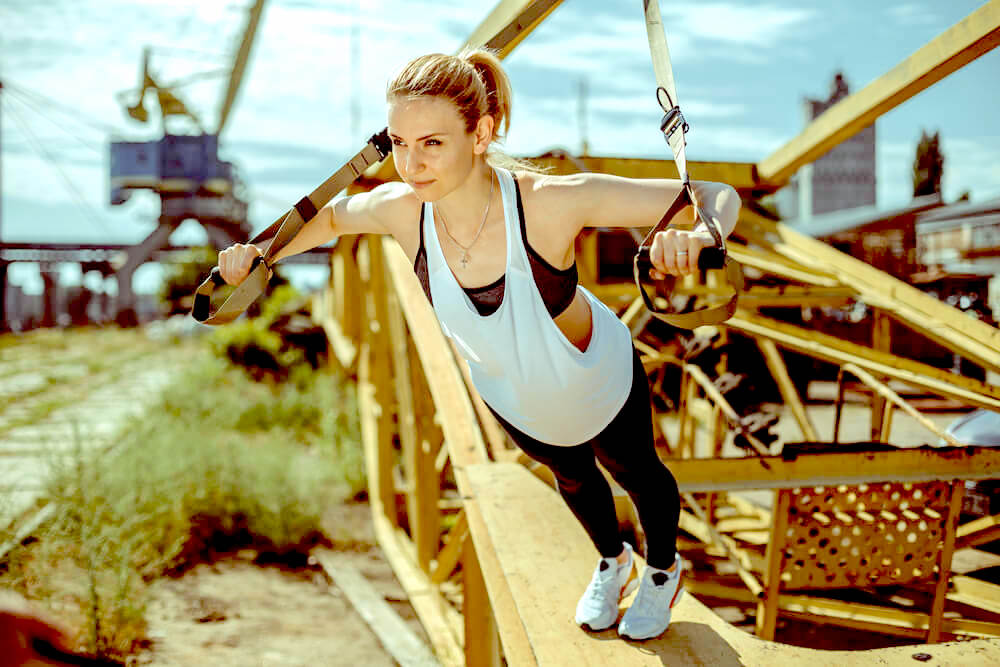
And when you are ready to take your workout to the next level and increase your results, there is always a step-up version. You can increase the number of reps or find the more advanced versions of the movements you enjoy.



